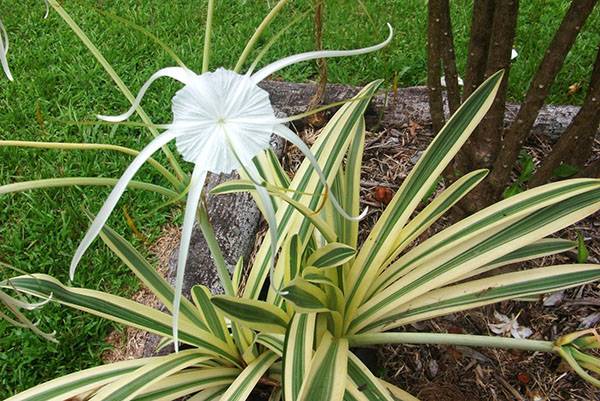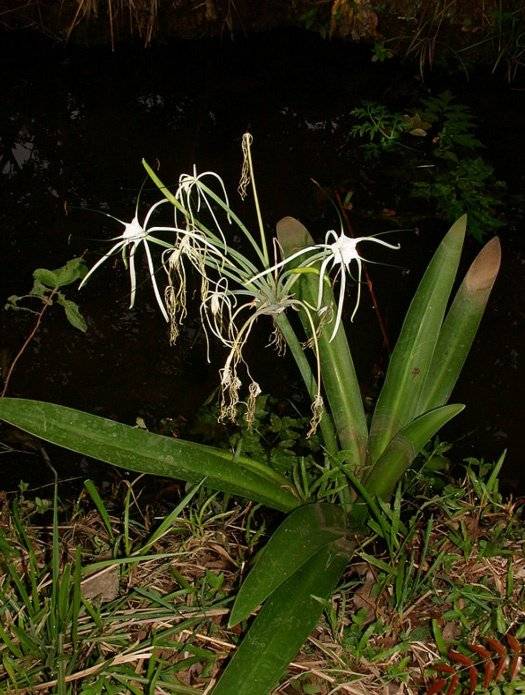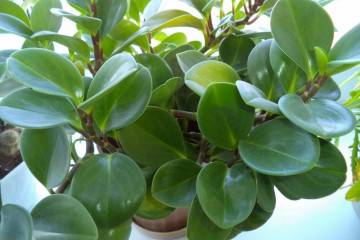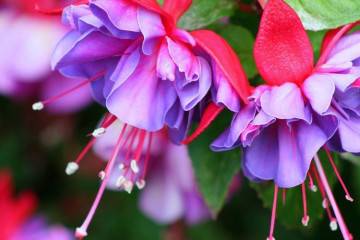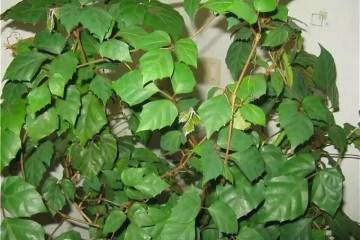Hymenokallis - home care
Content:
Hymenokallis is a beautiful exotic flower of the Amaryllis family, native to Latin America. This perennial bulbous plant prefers tropical and subtropical climates and inaccessible places. In nature, you can find it on the hills along the water bodies in North and South America, India and Africa. Knowing the peculiarities of caring for this plant, it will not be difficult to grow it on your windowsill or decorate your garden bed with an exotic native of tropical forests.
Description of hymenokallis: what is this flower
The leaves of the flower are petioled, dark green in color, they are distinguished by an oval or lanceolate shape, collected in a rosette. In total, no more than 7-8 leaves grow during the season, the width of which is 8 cm, and the length of 25-40 cm. The root of the plant has the form of a pear-shaped bulb with a diameter of 8-10 cm, elongated in the upper part.
Flowers in the form of an open umbrella of snow-white color have refined and graceful petals reaching a length of up to 11 cm. It is thanks to its petals that the plant received its second name spider lily. Indeed, the petals resemble the long legs of a spider hanging from curved gray-green peduncles. The length of one peduncle ranges from 30-40 cm, it contains from 7 to 10 flowers.
Main varieties
In total, there are about 50 species of this plant, but only four are most widespread.
Hymenocallis pleasant (Hymenocallis festalis) lives in the subtropical Caribbean forests. The leaves have a belt-like shape, they are bright green up to 40 cm long. The flower of Hymenocallis Festalis in a lily is large, almost 10 cm in diameter.
Coastal Hymenocallis (Hymenocallis littoralis) can be found in the swampy forests of Mexico, Peru and Brazil. Oblong leaves 40-70 cm long have a characteristic grayish wide stripe in the center. The inflorescences are similar in shape to the flowers of the daffodil.
Hymenocallis caribbean (Hymenocallis caribaea) grows in the Caribbean and Jamaica. It differs from the previous two in larger flowers and the peculiarity of blooming in winter.
Hymenocallis broadleaf (Hymenocallis latifolia) is ubiquitous in Jamaica and Cuba. The flower grows up to 90 cm in height, the leaves are emerald in color, the flowers are tubular with bent petals.
Hymenokallis care at home
Hymenokallis home care is not difficult, since this flower is unpretentious. However, it is important to understand that grooming measures for different species are slightly different. This is due to the fact that some of them naturally grow in the mountains and need a period of rest. And representatives who grow in tropical forests do not need a rest period.
The most suitable conditions for growing hymenokallis, regardless of the species:
- choosing the right place. The pot should be located in a well-lit area, preferably in the southern part of the house. In winter, it is important to provide additional lighting;
- optimal temperature. During the flowering period, the spider lily feels good at 18-20 ⁰С. After the end of the growing season, the temperature should be reduced to 5-15 ° C;
- humidity. Despite the fact that this is a tropical plant, there is no need to artificially increase the humidity in the room. However, in summer, when the weather is hot, it is recommended that the flower arrange a warm shower.
The flower should be watered only with settled water as the top layer of the soil dries out. Watering should be sufficient, otherwise the leaves dry out, turn yellow and wither. However, it is important to avoid excessive moisture in the soil, as there is a risk of bulb rotting. If this happens, the plant dies quickly.
During the flowering period, the lily needs feeding at least 3 times a month. Complex fertilizers are usually used for flowering crops. After the end of flowering, hymenokallis, which does not need a rest period, is fed once every 2 months. Those species that need rest are not fertilized after flowering, but they leave the same amount of watering until autumn.
It is important in the summer to avoid direct sunlight on the leaves. From this they become pale, so on the sunny side of the house you should shade the lily.
Once a year, young plants are transplanted into a slightly larger pot, since the flower grows a bulb. Adult plants are transplanted no more than once every 3-4 years. At the same time, the daughter bulbs are separated, since the lily will not bloom from their excessive amount. Also, during transplantation, the mother bulb is carefully examined and, if decay is present, the affected areas are carefully cut off, and the cut site is treated with charcoal.
Since it is a tropical and thermophilic plant, when grown in a garden in the fall, it must be dug up and stored in a cool place, and when spring comes, planted back into open ground.
The pot for transplanting should be chosen small in size, this stimulates active and abundant flowering in the spider lily. The most optimal would be a pot with a diameter of 12-20 cm. The substrate should consist of peat, sand, turf and compost, taken in equal proportions.
Flowering and dormant period of the plant
Hymenokallis is not a houseplant, therefore it is important to observe the optimal temperature regime and watering so that it can hibernate. All types of flowers that naturally grow in the foothills, for example, hymenokallis festalis, completely stop watering in October-November, until the beginning of March. The plant sheds its leaves and falls asleep. The dormant period lasts three months, while it is recommended to place the plant in a cool place with a temperature not exceeding 10-12 ° C.
After the plant is returned to its usual environment and watering is resumed, it releases a peduncle. The flowering period also depends on the type of lily: for some, it begins in mid-March, for others, in mid-summer. As soon as the spider lily fades, the peduncle is cut off, but watering is not reduced. During this period, the plant actively grows a bulb and children are formed.
Reproduction of hymenokallis
The spider lily hymenokallis is propagated by seeds or by dividing the bulb.The first method is rarely used, since the seeds of this plant have poor germination. Germination can take from several weeks to 2 months.
The second method gives the best result. At the age of 3-4 years, small bulbs grow on the mother plant. They are carefully separated and immediately planted in separate containers until they have time to dry out. The mother's bulb is transplanted into a new pot and left untouched for four years.
Diseases and pests
With the wrong watering regime, excessive moisture, the plant is susceptible to diseases such as anthracnose and staganospore. This disease is manifested by the appearance of black or brown spots and blotches on the leaves. To help the flower, you need to carry out the following activities:
- using a sharp knife or scissors, carefully cut off the affected areas;
- treat the whole plant, even intact leaves, with a fungicide;
- reduce the frequency and volume of watering;
- ventilate the room regularly.
Excess moisture, as well as lack of fresh air, is often the cause of plant disease.
In addition, the spider lily has enemies among the parasites, which also infect it with excessively moist soil in the pot. Most often, hymenocallis suffers from:
- spider mite;
- aphids;
- mealy worm;
- thrips.
To get rid of parasites, the plant is treated with insecticides. It is worth noting that if you properly care for the flower and observe the watering and feeding regime, the lily gets sick quite rarely, since it is highly resistant to common ailments.
With the timely organization of the dormant and flowering period, timely feeding and compliance with the temperature regime, this exotic guest of the hot tropics will feel good in a cold climate. It is important to transplant the flower on time, inspect the bulb and separate the children, and then the spider lily will delight its owner with abundant flowering for many years.



